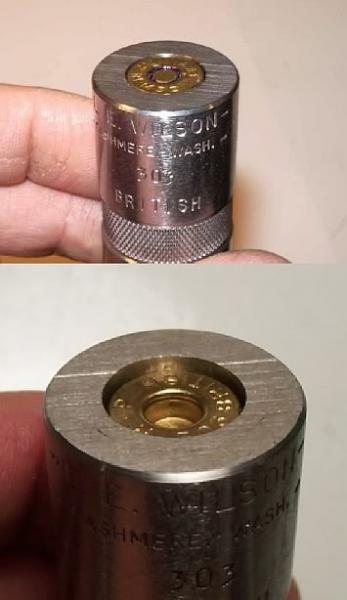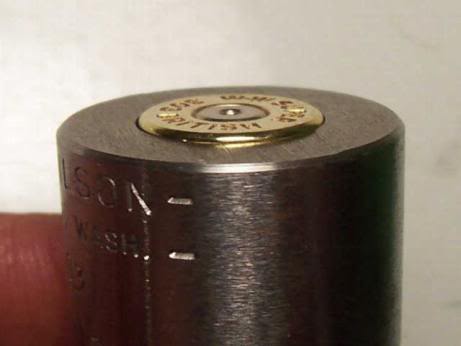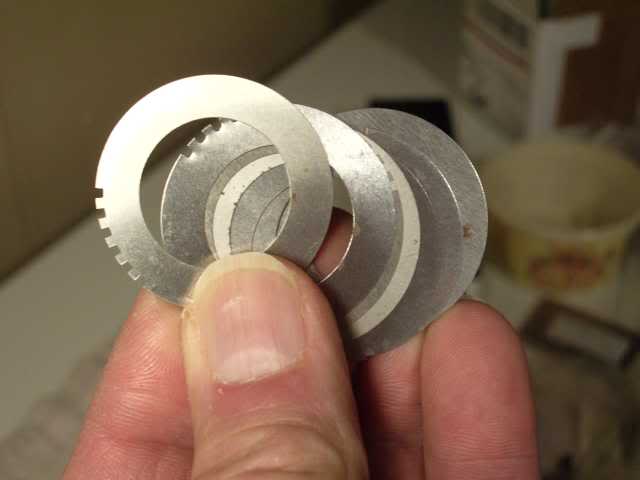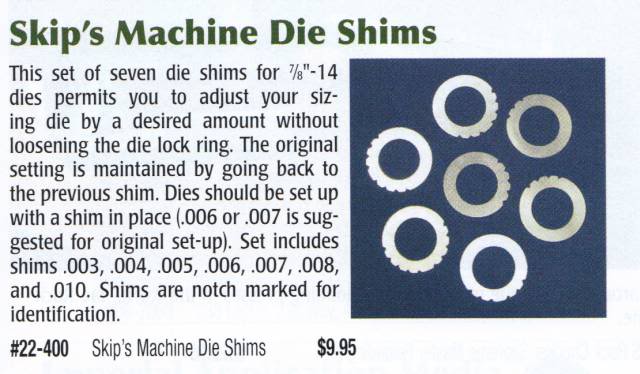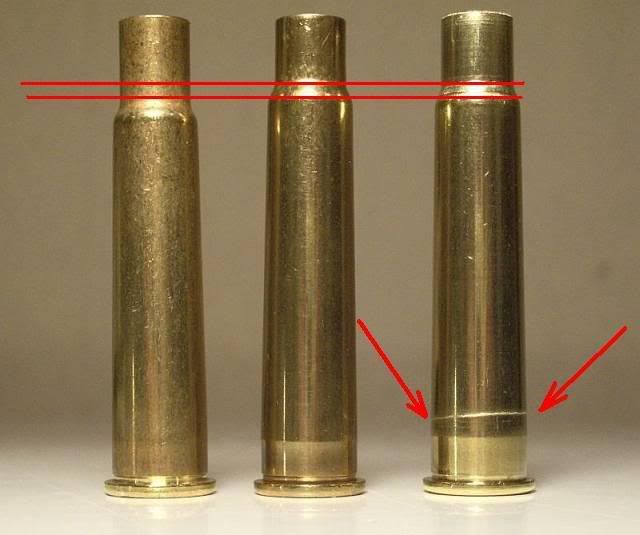-
Legacy Member

reloading 303.
I have just started the process of going through all my old cases (several thousand of them) and removing the old primers. I have the horandy reloading turret stuff and all the kit I need. couple of questions.
1. Over the last couple of thousand rounds I kept the cases and marked which rifles they came from. Generally shoudl I only refire these cases in teh same rifles to prolong case life?
2. When I have primers removed. Is there a recommended cleaning method? My inclination is to use a fine mesh bag in the dishwasher (when the wife is out). Would that be good enough?
3. Finally regarding the cases that are not marked. Do I resize the whole thing or just accept that not every cartridge will fit into every rifle I have, or is this asking for case separation and trouble down the line?
Information
 |
Warning: This is a relatively older thread
This discussion is older than 360 days. Some information contained in it may no longer be current. |
|
-
-
09-03-2010 04:43 PM
# ADS
Friends and Sponsors

-
FREE MEMBER
NO Posting or PM's Allowed

If you are going to neck-size only, generally recommended for .303, keep your brass segregated by rifle.
I have never cleaned my .303 cases, bit I will sometimes clean the primer pockets if they are especially dirty.
You can full-length resize the orphan cases or just neck-size and be prepared for a hard feed or two. They will then form to that rifle.
The .303 round is pretty easy to reload, and you'll like the results.
-
-
Advisory Panel


Excellent advise there, jonnyc, and thank you for piling in.
I am reloading for a small army's worth of .303s and find that it is darned near impossible to keep them sorted out sometimes. Generally, I segregate brass by the rifle it was fired from and neck-size only; this is your quickest route to turning out some very accurate ammo.
You should segregate brass by MAKER, also, there being fairly great variance in some of those. The single most consistent brass for the .303 which I have ever encountered is the Canadian -made WW2 stuff made by Defence Industries. Every rim I have measured (a lot) is either right AT the .063" MAX or so close to it that my Moore & Wright micrometer actually has trouble measuring it.
-made WW2 stuff made by Defence Industries. Every rim I have measured (a lot) is either right AT the .063" MAX or so close to it that my Moore & Wright micrometer actually has trouble measuring it.
For actual loads, I find that a very good test load for any .303 is a Sierra 180 flatbase Pro-Hunter with 37 to 38 grains of 4895. You SEAT to the overall length of a Mark VII Ball round; this crowds the rifling just a bit but the rifles like it. Velocity on this is 2250 with a Lee-Enfield, 2335 with a Mark III Ross. It s extremely accurate and just a bit on the mild side, so no pressure problems at all.
For a load with a 150, I use the HORNADY flatbase Spire Point with 40 grains of 4064, bullet seated so that the ENTIRE cannelure shows. This also is an extremely accurate load..... and just a little bit mild.
For Cast Bullet mild load, there is no substitute for the C.E. Harris UNIVERSAL load for midsize military rifles: 13 grains of Red Dot shotgun powder with a CAST bullet of about 180 grains weight. This will give you close to 1800 feet per second. This load works well with most midsize military rifles and cartridges, so you can use it with the 8x57, .30-06 and others. Bullets may well be more accurate if you use gas-checks, so that is something to know. This load usually gives about 2 MOA or a little under. Cheap, too: 537 rounds out of a tin of powder!
Hope this helps.
.
-
The Following 5 Members Say Thank You to smellie For This Useful Post:
-
Legacy Member

By rifle only,neck size until mild full size is required usually the shoulders to be moved back a little. Full length sizing reduces case life if you have a large chamber. Clean when the cases feel sticky or have been on the ground. A wipe with a rag poke a inside neck brush in spray lube or wipe neck with rag dampened with lube reload. I use a Lee neck sizing die.
-
-
Advisory Panel


Yes, something I should have mentioned.
My bad!
You can at least DOUBLE the life of your .303 brass by lubing the INSIDE of the case neck. I have brass here that has gone 15 times and still does not even need to be trimmed.
Serious.
Good luck!
-
The Following 2 Members Say Thank You to smellie For This Useful Post:
-
I know everyone has their way of doing it, but presently I figure stuff case life if you have heaps of brass and full length size. You'll still get 5+ reloads and will never have any chambering issues, in any rifle you feed it to. I used to neck size only and, yes case life is prolongued and mabe there is an accuracy advantage, but I can't pick it.
The convenience of being able to use my reloads in any rifle is very significant to me, and it's why I now choose to do it this way.
That's just my 2 cents.
-
Thank You to tbonesmith For This Useful Post:
-
FREE MEMBER
NO Posting or PM's Allowed

A case separation in the middle of a comp could spoil your day, so careful case inspection is well worthwhile. Check before you clean the brass - you are looking for any sign of a bright line around the case just above the web. If you can see any bright line, even if it doesn't go all of the way around, dump that case.
-
Legacy Member

You might take a look at the shoulder of a number of your fired cases and compare them with a new cartridge. You will find the LE chambers vary a lot in shape from each other. They also vary a LOT from the shape of a new unfired cartridge. This presents a challenge since reloading dies normally produce a sized case that more closely resembles the unfired rounds instead of the various chambers. The best compromise might be to find the smallest chamber you have and resize to fit it knowing that the loads will fit anything with a larger chamber.
A learning exercise you might try is take a box of 20 and reload and shoot then until a few fail. Depending on the circumstances of your brass, chamber, loads and loading techniques you will probably get a few failures before you have reloaded the box 5 times. Wear glasses. To prepare for the inevitable you might take a rough fired case or two and trim most or all the neck off and keep them with you when you go to the range. When you have a case head separation you can run the neckless case into the shell that is left in the chamber and bump the bolt into it. Then retract the bolt and it will pull out the headless case. Once you have seen the way fired brass behaves you can try fine tuning your technique to extend the life of your brass. I am am sure you will get plenty of help here.
Last edited by ireload2; 09-06-2010 at 12:38 AM.
-
-

Originally Posted by
newcastle

I have just started the process of going through all my old cases (several thousand of them) and removing the old primers. I have the horandy reloading turret stuff and all the kit I need. couple of questions.
1. Over the last couple of thousand rounds I kept the cases and marked which rifles they came from. Generally shoudl I only refire these cases in teh same rifles to prolong case life?
2. When I have primers removed. Is there a recommended cleaning method? My inclination is to use a fine mesh bag in the dishwasher (when the wife is out). Would that be good enough?
3. Finally regarding the cases that are not marked. Do I resize the whole thing or just accept that not every cartridge will fit into every rifle I have, or is this asking for case separation and trouble down the line?
If you just start doing it, in a safe manner as prescribed in any good handloading manual, you'll sort out how you want to deal with all the details in the medium term. Try it all, neck size and record the rifle it came out of, see if those rounds will fit other rifles(of the same caliber), see how many reloads you get doing it both ways, and decide for yourself, because either or both work well and it's just about what suits you.
If you're reloading on a regular basis, and using case lube you will probably want a case tumbler pretty early on rather than using the dish washer, because you may want to clean the brass before sizing, then after as well to remove the lube, I only clean them after sizing to remove the lube, but it would be a bit of a hassle to do them in the dishwasher then have to wait for them to dry and get growled at by the wife etc.
Also if it's just the primer pockets you want to clean, after removing the primer, you can buy a little primer pocket cleaner, which is a small wire brush made just for it.
-
-
Banned
















 PM
PM











